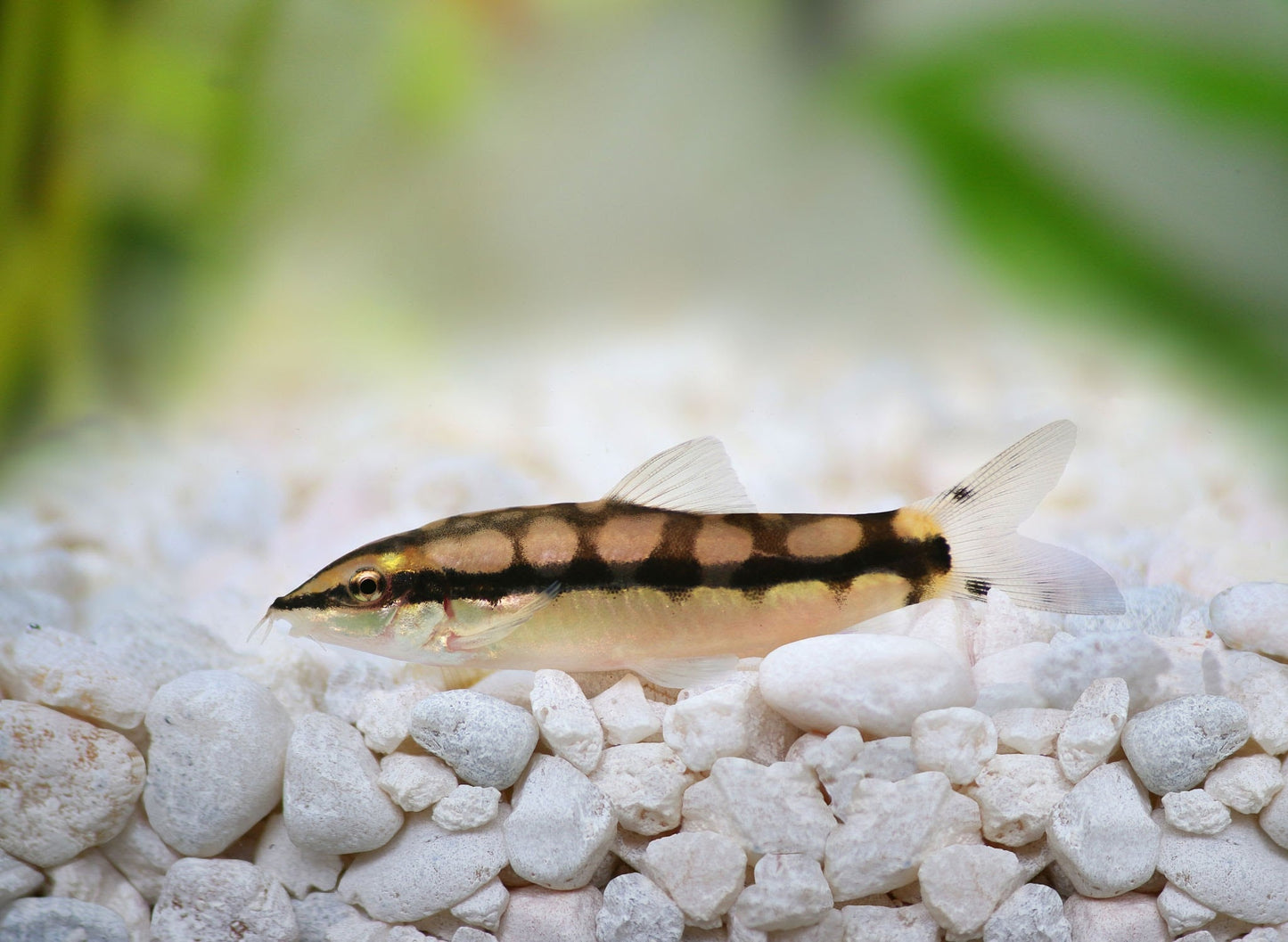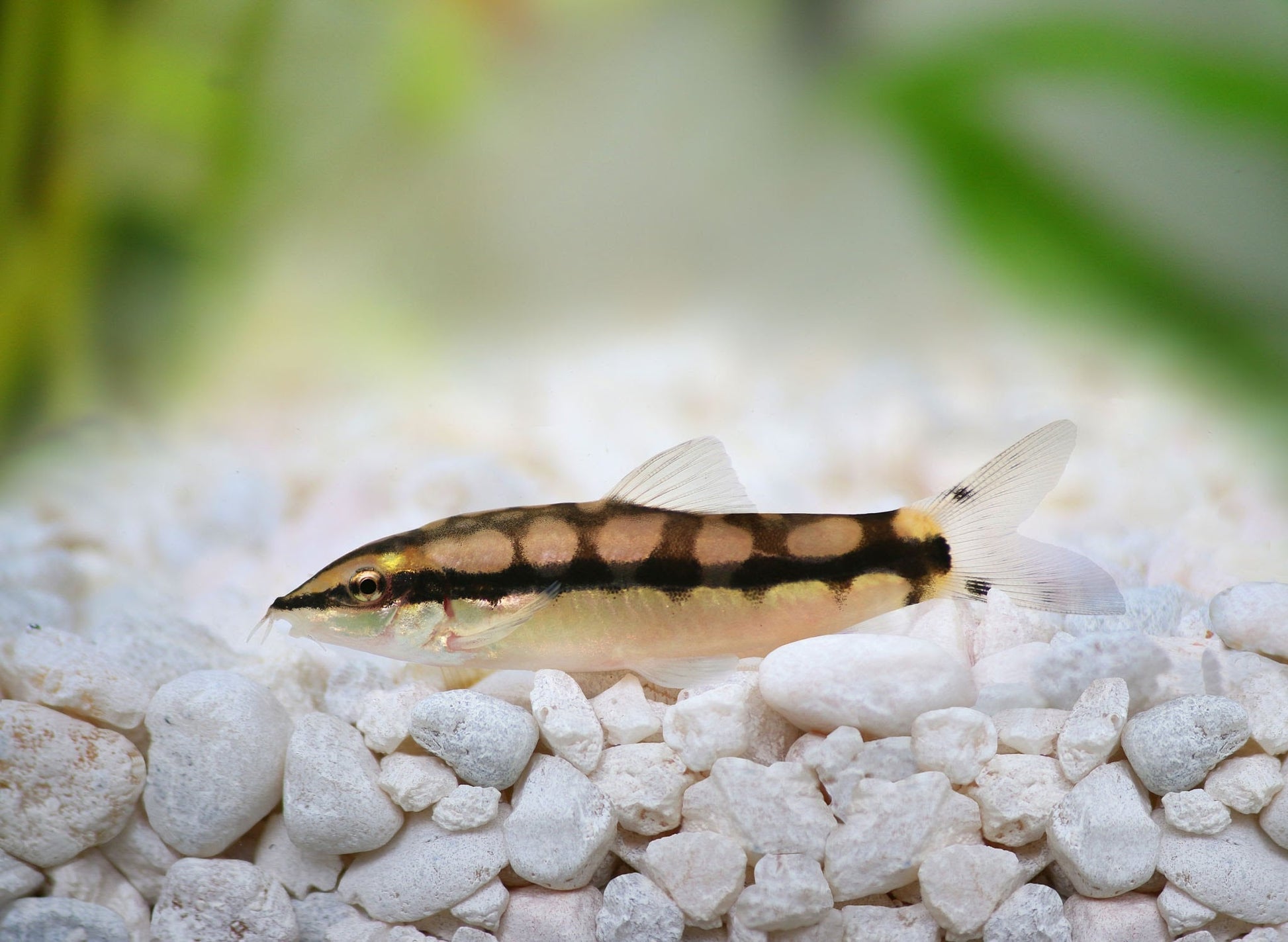Loach - Dwarf Chain (Ambastaia sidthimunki)
Loach - Dwarf Chain (Ambastaia sidthimunki)
If searching for that special something for your mature community tank, take a look at the Dwarf chain loach. With its pretty appearance, outgoing, and inquisitive personality, the dwarf chain loach is the perfect tank addition.
Dwarf chain loaches, once occurred in vast numbers in river basins of the Chao Phraya, Kwai and Mae Klong of Cambodia, Laos and Thailand. Numbers are dwindling however, largely due to hydro-electric damming, and the species is declared 'critically endangered' on the IUCN red list. In Thailand it is now protected. Thankfully, they have been spawned in captivity on a large scale, for the trade by dedicated hobbyists.
Being a dwarf species that rarely exceeds 6cm/2.4", it is a good choice for smaller tanks. They do require room to swim though and the length and width of the tank is more important than height.
The aquarium must be mature and have a substrate of soft sand or very fine smooth gravel to protect this fish’s delicate sensory barbels. A myriad of hiding places should be provided among bogwood, slate, rocky caves and robust planting.
The more refuges you create for them, the more you will see them. They need to know they always have plenty of options for a quick retreat if sensing danger. Once settled in to their surroundings, this knowledge will ensure they spend a lot of time in full view.
The water should be well oxygenated and with moderate to fast current. While delicate plants may be nipped at, species such as Anubias and Java fern (Microsorum sp.) are safe and do not seem to mind the slightly subdued lighting the loaches prefer.
Good filtration, a regular water change regime of approximately 25% per week and a varied diet will keep them in tip-top condition. Neutral water is best, but clean, stable conditions are more important than playing around too much with hardness and pH. Temperature should be within 24-28°C/75-82°F.
Unusually for loaches, they not only spend time on the bottom of the tank but can often be seen actively shoaling in midwater together, often playing ‘follow my leader’, stopping now and then to hover and excitedly flap their pectoral fins in enjoyment. This behaviour means they will take food from all levels of the tank— be it flake, pellets, granules, wafers, or small meaty frozen foods.
Keep a large group all together. By this I mean a large group of sids — not a large group of mixed loach species. Not only will they then develop a complex social hierarchy within their own shoal, but their overall behaviour will be more natural.
They can be kept with rasboras, danios, small barbs, tetras etc.
The majority of snails however will be seen as a tasty snack, so don’t add sids to a tank of ornamental snails! This makes them good for pest snail removal, however.
Share


